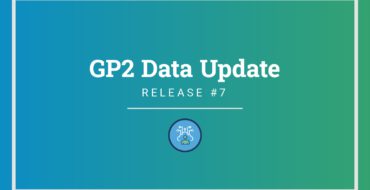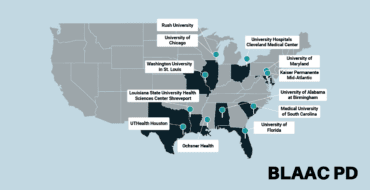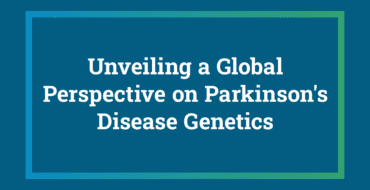Collaborative Science Unlocks GBA1 Discovery

First major discovery of a novel risk factor for PD in people of African ancestry demonstrates the importance of including underrepresented populations.
With the discovery of the first genetic risk factor for Parkinson’s disease (PD) that is specific to people of African ancestry, it is impossible not to be excited about where the Parkinson’s field is headed. In this moment, there’s hope that the field is getting closer to a reality where there will be a fuller picture of the genetic underpinnings of disease risk and progression–and that those genetic findings will soon benefit those who have long been underrepresented in research and underserved in medicine. The Global Parkinson’s Genetics Program (GP2) is paving the way for impactful discoveries like this and more, all through its model of inclusive, collaborative research.
Briefly, there were already variants in the GBA1 gene known to confer an increased risk for developing PD. These variants are found with the highest frequency in individuals with Northern European and Ashkenazi Jewish ancestry. Today, GP2 reports the discovery of a new GBA1 variant, specific to individuals of African and African-admixed ancestry. This variant conveys significant increased risk of developing PD by 1.5 fold when having 1 copy and 3-4 fold if both copies of the variant are inherited. While common in a Nigerian PD cohort, this variant is incredibly rare in other world populations, and as such, went undiscovered until now.
What is GP2?
GP2 launched in 2019 as the first resource program of Aligning Science Across Parkinson’s (ASAP). Its aim is to dramatically expand our understanding of the genetic basis of PD and to make that knowledge globally relevant by genotyping over 150,000 volunteers from around the world, which would make this dataset the largest and most ancestrally-diverse PD dataset at its completion. The program design is an intentional move to fill key gaps as our current understanding of PD – like other disease areas – does not reflect the diversity of those afflicted with the disease; thereby rendering our understanding of disease incomplete. This has huge ramifications for drug development, clinical trial design and participation, as well as downstream disparities in care.
What excites me about this program is not simply the scope and scale of the work, but also the strategy that GP2 has employed to make this program a reality. With Drs. Andrew Singleton and Cornelis Blauwendraat at the helm, they laid out an actionable blueprint in which GP2 would serve as both a discovery engine and capacity builder – equipping a global research collective with the skill sets, tools and infrastructure to rapidly and efficiently address emerging research needs and questions. GP2 has collaborators in 55+ unique locations across six continents with samples coming from each one. This is both a massive undertaking and an important step in the right direction, considering that the majority of large-scale genetic discovery work to date has been performed in individuals of European ancestry (estimates range from 86–96%).
What is the main workflow in practice? Any qualified researcher can be a part of GP2, as long as they are willing to either share a cohort or provide expertise to the network. GP2 then acts as the central hub to generate the genetic data and harmonize the corresponding clinical data. The genetic data is returned to the contributing researcher and pushed into the central GP2 computational workspace. Any GP2 member can propose an analysis and request technical or computational support in order to analyze the data. Those results, along with supporting data, are then shared out to the rest of the research community.
A Look Back: How We Got Here
The first two years of GP2 were exclusively focused on operations and capacity building – bringing together 147 existing cohorts from 59 countries to date, ensuring that the right consents and data-sharing permissions were in place, building up trust between the various communities around the world and setting up the central workflow pipelines. Importantly, the commitment to global diversity was part of the backbone of these efforts, from increasing representation within GP2 leadership to funding collection efforts in low-to-middle-income (LMIC) countries as well as in underrepresented populations in the United States (U.S.).
Last year, GP2 shifted the focus from operations and infrastructure to data generation. One of the initial preliminary analyses was run on the Nigerian cohort. At the time, it was viewed as a bioinformatics training opportunity, since the expectation for outcomes was low due to the small sample size (nearly 1000 cases). Participant case numbers included in large-scale genetic studies often number in the tens to hundreds of thousands to uncover new genetic risk factors. When it became clear that the results suggested there may be a new risk variant identified, the analysis was rerun to increase confidence. This finding was then validated in an independent study of individuals participating in BLAAC-PD (Black and African American Connections to Parkinson’s Disease), a collection effort supported by GP2 within the U.S. for those of African and African-admixed ancestry; demonstrating that this risk variant is prevalent throughout African populations beyond West Africa.
Impact, Open Questions, and New Horizons
This finding underscores the transformative potential of an intense commitment to inclusive science in the pursuit of fundamental knowledge toward the betterment of human health. While this finding was unexpected, GP2 has created an ecosystem and infrastructure for these types of insights to emerge. Roughly 2% of the individuals included in any type of large-scale genetic studies are of African descent [Sirugo et al., Cell 2019], while being about 18% of the world population. Further, PD is typically considered less prevalent in African and African American populations (Bailey et al, 2020, Okubadejo 2007), though this claim is controversial as there are often conflicting reports with few studies that even include these populations.
As a Black woman of Nigerian ancestry, this finding hits close to home. I don’t often see myself represented in genetic research studies, so it is especially gratifying to have a front-row seat to a discovery that has practical implications for my community and all those of similar ancestral background. As gene-based precision therapeutic trials are becoming more common, it is imperative that the diversity gap for large genetics studies narrows, as genome-wide association studies (GWAS) findings may not replicate across ethnic groups, as evidenced by this GP2 finding as well as others in different disease areas (e.g., CYP2D6 variants fueling differences in cancer drug [tamoxifen] metabolism across populations [Popejoy & Fullerton. Nature 2016], advances in cholesterol targeting treatments [PCSK9 inhibitors] driven by inclusion of African American populations in research [Cohen et al., Nat Gen 2005]). This finding provides a new therapeutic opportunity for those of African ancestry.
Many questions still remain about how GBA1 may contribute to PD. One of the first clinical trials by Sanofi (Venglustat) that targeted GBA1 resulted in the treated group doing worse than placebo, suggesting poor mechanistic understanding of the actual disease mechanism. By studying additional GBA1 variants linked to disease, we can improve our understanding of how GBA1 variants lead to disease and enhance the therapeutic targeting of this disease-linked pathway. Importantly, by studying these variants in different worldwide populations, we can expand the population of patients that may benefit from GBA1 targeted therapeutics.
As GP2 continues to accelerate the discovery engine, the expectation is that more findings will emerge in populations around the world that will change our approach to clinical trials and enrich our understanding of the genetic architecture of PD. Reflecting on the ecosystem that GP2 has created, the capacity we have built and the coalition of investigators we have cultivated, the story of inclusive collaboration is clear. The authorship byline – made up of 78 authors with 24 different Nigerian institutions represented – highlights the story of the collaborative effort between the GP2 team, the International Parkinson’s Disease Genomics Consortium (IPDGC) Nigerian chapter, The Michael J. Fox Foundation and 23andMe.
Keep an eye out for this program, there’s more to come!
(Disclaimer: This discovery is a significant research milestone for the study of Parkinson’s genetics; however, this news does not currently have implications for care. Read this FAQ for more on what this finding might mean for you.)



